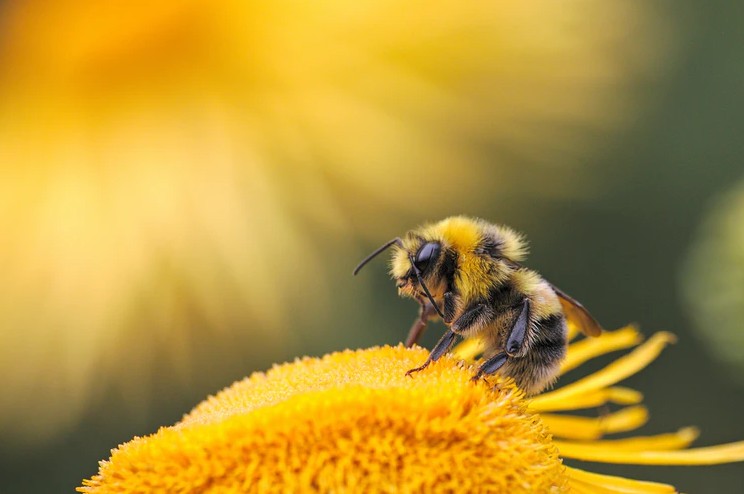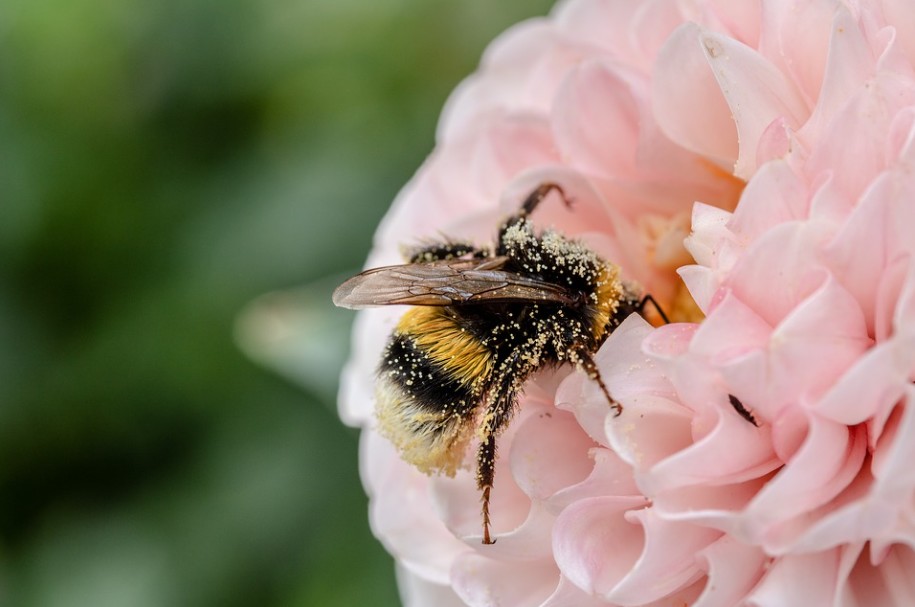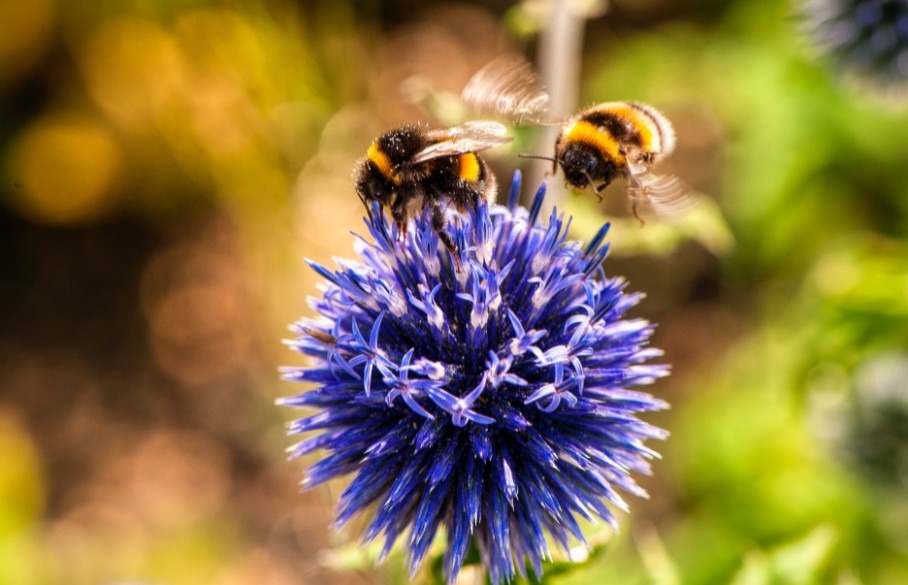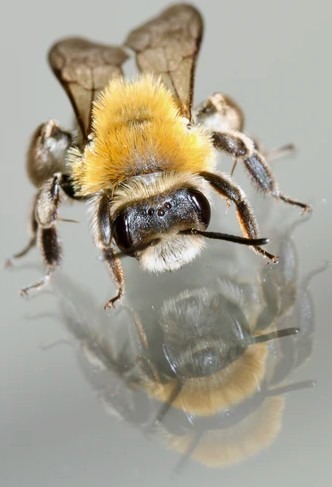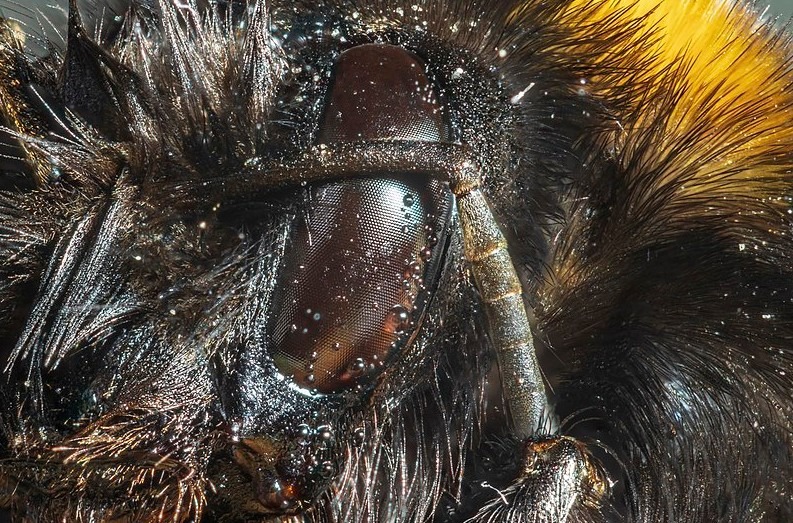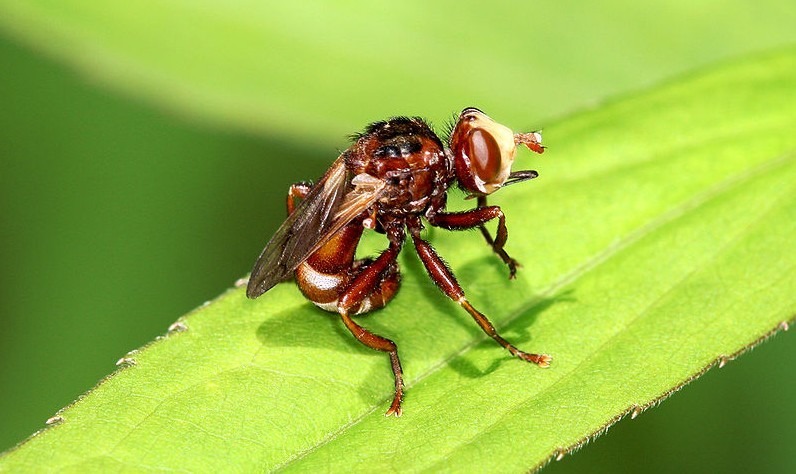Famous for their large, hairy bodies striped in yellow and black bands, bumblebees are amongst the most efficient pollinators on Earth. They have short, fast-beating wings and stocky bodies covered with hairs to which pollen sticks. Bumblebees are known for their ability to collect nectar from flowers and pollinate plants.
Curious to know more about these impressive little prodigies? Keep reading to learn seven interesting facts about bumblebees:
We are Dependent on Bumblebees for Most Food
Over two-thirds of all the crops in the world depend on animals for pollination. Many animals, such as bats, butterflies, and birds, act as pollinators, but much of the world’s pollinating praise goes to bees.
Bumblebees, in particular, play an imperative role in keeping countless ecosystems healthy. They beat their wings at high speeds, which – together with their large bodies – shake flowers until they release pollen. This phenomenon is called buzz pollination: many flowering plants rely on buzz pollination to produce fruits.
In addition to wild bumblebees pollinating plants in nature, they have become commercially valuable as pollinators of various crops in recent times. With the agricultural demand for bumblebee-pollinated foods – such as berries, hothouse tomatoes, and peppers- rising in the past two decades, the business of managed bumblebee hives has also bulged.
Wings of Bumblebees Beat At Incredible Speeds
Since bumblebees move their wings so fast that the human eye alone cannot observe its speed, scientists have to use high-speed cameras and computer vision techniques to analyze their wingbeats. By using intersecting laser beams and virtual stereo systems, scientists found out that bumblebees’ wings beat 130 or more times per second.
This wingbeat creates a vibrating pulse, which makes bumblebees stand out as pollinators. The vibrating pulse allows bumblebees to perform buzz pollination, which helps plants produce more fruit. Due to their wingbeat, they have a faster efficiency which explains why they spend significantly less time on each flower than other bee species.
Bumblebees Have Five Eyes
These fuzzy insects do not have two, three, or four eyes but five eyes! Now you might be wondering why a little bee needs so many eyes? Well, bumblebees have to navigate their way through many hurdles and pick up shapes, colors, and UV markings on flowers to find food. Therefore, they need a complex eye system comprising five eyes.
There are two big eyes with six thousand facets and three small eyes on the top of their heads. The smaller ones are placed closely together and give the bee different perspectives of the surroundings. While bumblebees have bigger eyes than honeybees, their eyes lack the interfacetal hairs on the surface found on the eyes of honeybees.
Bumblebees are Social Insects
Most native bee species prefer living in solitude and thus, do not form hives or colonies. The bumblebees, however, are an exception. They are amongst the most social insects in the whole animal kingdom. Like honeybees, bumblebees stay together as colonies and live in hives where they get shelter and raise their young ones.
Often located close to the ground, bumblebee hives can vary in size according to the species. However, on average, a typical bumblebee colony includes between fifty to five hundred individuals. Other factors like temperature and rainfall also affect the size of a bumblebee colony. The larger the size of a bumblebee colony, the greater the pollination efficiency will be. Moreover, a larger workforce ensures higher quality brood care and better defense against predators.
There Are Over 200 Species of Bumblebees
The Integrated Taxonomic Information System (ITIS) recognizes over 255 species of bumblebees in the world. There could be even more different species, but some are difficult to set apart due to similarities in their features. The conservation status of most of the recognized species remains unknown. There are two recognized genera of bumblebees: Bombus, the nest-building ones, and Psithyrus, the parasitic ones.
Since there are so many different species, there is also variation in the physical attributes of the bumblebees. The eastern bumblebee with its signature yellow and black stripes is the most widely distributed and recognized in the United States. Other species feature a darker coloration, and some even have red-colored bands instead of yellow and black ones. When it comes to size, the queen bumblebee can grow up to 4 centimeters in length.
Bumblebees Do Not Make Honey
Unlike honeybees, bumblebees do not produce much honey. The reason for this difference is that honeybees need to store honey to survive through winters. Bumblebees, however, do not need to stock up for the cold because most of them die in the fall.
In every colony, there is a dominant female bumblebee who is the queen. The rest of the bees gather food for her and care for her developing larvae. In late fall, except for the new queens, the whole colony dies. Those new queen bumblebees hibernate underground during the winter and set out to make a new colony in the spring. It is their naturally depressed metabolism that gives them an upper hand in terms of a longer lifespan than the other bumblebees.
While wild bumblebees do collect nectar and pollen, most of them consume it immediately. Some, however, mix the pollen with their saliva and then chew it to make honey.
Bumblebees Are In Trouble
Our furry friends face countless threats – including but not limited to climate change, habitat loss, pesticide use, introduced diseases, and competition with honeybees- that are pushing them to the brink of extinction. According to an analysis by IUCN, over a third of the forty-nine bumblebee species in North America are rapidly declining. In fact, four of them have declined up to 96% over the past two decades. The losses are not limited to Northern America: scientists report similar population decline of various bumblebee species across Europe, South America, and Asia.
Rusty patched bumblebee, one of the most common bumblebee species, was placed on the Endangered Species List in 2017 after its population declined by a dangerous 87% within its historic range. In 2021, the Endangered Species Act protection was granted to the American Bumblebee after the species plummeted by 89% in just 20 years. In total, five bumblebee species are currently present on the IUCN Red List of Endangered Species as critically endangered. All these species have almost completely vanished from large portions of their habitats.
Final Words
Due to their unparalleled pollinating skills, these yellow and black striped fellows are integral to the survival of countless plant species. They may not weigh much but carry out hefty tasks all day around. However, in recent years, bumblebees have been reeling towards endangerment due to the reckless actions of humans. To help our buzzy friends, we have to be more conscious of our actions and their effects on the environment.

